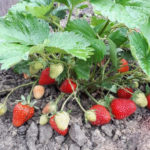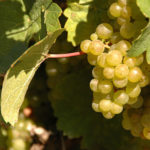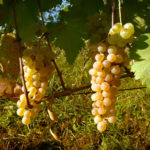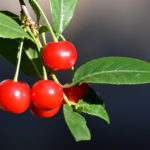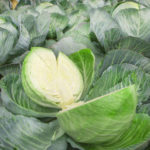Plum variety Angelina (Angelino)
Storing plums is not an easy task, because the fruit flesh very quickly overripe and becomes soft. But the situation is not so hopeless, because there are varieties with excellent keeping quality, thanks to which, even in winter, you can enjoy the sweet fruits of the southern culture. One of these types is Angelina. It does not appear in the State Register of Breeding Achievements of the Russian Federation. The culture was bred in America, as a result of crossing the California cherry plum and the Japanese plum. Abroad, the variety is widespread, it is considered commercial.
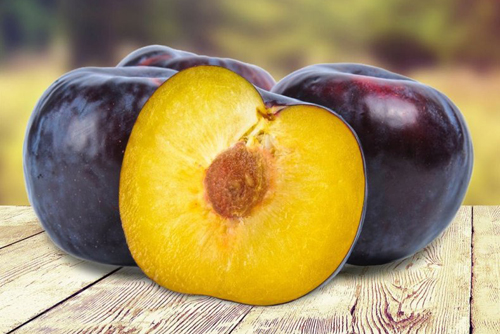
Description
In appearance, the tree strongly resembles cherry plum. The plant has a powerful growth force. Height - not less than 3 meters. A spreading, wide-pyramidal crown is formed by strong branches. Shoots are covered with brownish-greenish bark. The thickening is moderate. The leaves are green, with a matte surface, with a medium-pronounced venation. The shape of the leaf is elliptical, the apex is pointed, the base is wedge-shaped. Angelina's leaf plate is curved along the central vein. The petiole is not long.
The fruits of this variety resemble plums. Large in size, broadly round, sometimes barrel-shaped. The usual weight is 50 - 90 grams, the maximum is 120 - 150 grams. The abdominal suture is poorly expressed. The skin is dense, at maturity it has a dark purple, almost black color. Thick, bluish-white wax coating. The flesh is of a beautiful amber color, very dense, fibrous, juicy. The plum tastes sweet and sour. Assessment of tasters - 4.2 - 4.5 points. The stone is small, easily separated from the pulp.

Characteristics
- Angelina enters the fruiting season early - 3-4 years after planting;
- flowering occurs at a later date, the harvest ripens in late September - early October, which classifies the variety as late-ripening;
- the yield is regular, gradually increasing every year. A fairly large crop can be removed from one tree - 50 - 70 kg;
- fruits can be picked even at the stage of technical ripeness. They are able not only to perfectly ripen during storage, but also to acquire even higher taste qualities;
- immunity to fungal diseases in the variety is at an average level. Low resistance of the plum to moniliosis is noted, the moth is the most dangerous of the pests;
- winter hardiness and drought resistance of Angelina are above average;
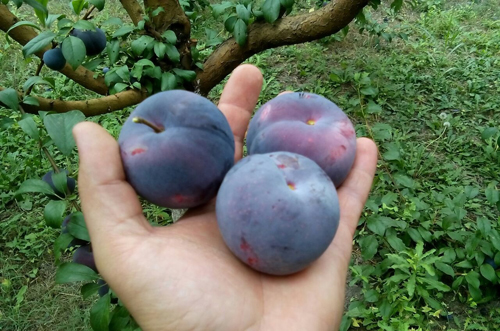
- according to the available information, in the Central Black Earth Region, the life span of a tree is sharply reduced, 2 - 3 years after entering the fruiting period, gum flow is often observed, a decrease in immunity, and then the death of the plant may occur;
- the transportability of the fruits is high, long-term transportation does not affect the presentation;
- in terms of shelf life, the variety is superior to other types of late plums. In vacuum bags that are stored in the refrigerator, the harvest will lie quietly for up to 4 months. In an ordinary basement - about a month;
- the way of eating fruits is universal. Fruits are very tasty and healthy fresh, they are used for making juices with pulp, jams. In compotes, the skin does not crack, and the flesh remains elastic. Also, the fruits are used for freezing and making premium quality prunes.
Pollinators
Angelina is self-fertile and needs pollinators. It is advisable to select diploid varieties that bloom at the same time as the described plum. Most suitable options: Traveler, Vixon, Prime Time, Grand Rose, Friar, Santa Rosa, Ozark Premier.
Planting and leaving
The plant can be planted in spring or autumn, depending on climatic conditions. The place should be sunny, with fertile and loose soil.Distance to neighboring crops should be at least 3 meters, row spacing - 5 - 6 meters. After entering the fruiting period, the amount of fertilizer applied is increased. Watering is carried out as needed, the soil in the trunk circle should be moderately moist, but not waterlogged. Mandatory procedures are preventive spraying and thinning pruning. If a lot of ovaries are formed, then it is necessary to carry out rationing of the future harvest so that the fruits of the plum are larger and sweeter.
Angelina is an example of an excellent crop in terms of yield and taste, which also has a good level of winter hardiness and drought resistance. The disadvantages of the variety are the need for annual careful monitoring of pests and diseases, as well as the requirement for the presence of a pollinator nearby.
